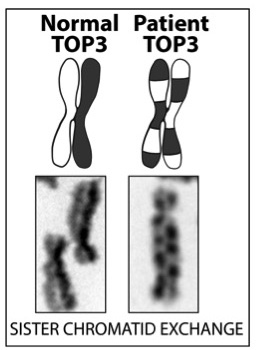A new genetic syndrome characterized by microcephaly
A new study from the Hickson group, conducted in collaboration with clinical geneticists from Edinburgh, UK, has revealed the existence of a new human syndrome associated with severe growth retardation and abnormal brain development leading to an unusually small head circumference (microcephaly).
 Microcephalic primordial dwarfism (MPD) is the collective term for several disorders characterized by pre- and post-natal growth retardation and an unusually small brain and skull size. Unexpectedly recent findings have shown that MPD is often caused by mutations in genes required for DNA replication or repair. Moreover, many of the altered genes are essential for embryonic development and cell viability, meaning that affected individuals generally harbor mutations that impair, but do not eliminate, the function of the encoded protein.
Microcephalic primordial dwarfism (MPD) is the collective term for several disorders characterized by pre- and post-natal growth retardation and an unusually small brain and skull size. Unexpectedly recent findings have shown that MPD is often caused by mutations in genes required for DNA replication or repair. Moreover, many of the altered genes are essential for embryonic development and cell viability, meaning that affected individuals generally harbor mutations that impair, but do not eliminate, the function of the encoded protein.
The study by Martin et al., which has been published in the scientific journal The American Journal of Human Genetics, identified over ten individuals with MPD who have mutations that impair the function of either Topoisomerase IIIa (TOP3A) or RMI1. These proteins are known to co-operate as part of a protein complex in human cells essential for preventing genome instability such as exchanges between sister chromatids (see Figure). This complex functions alongside BLM, which when defective leads to a disorder called Bloom’s syndrome that is associated with MPD (and cancer predisposition). Functional studies on these proteins have been conducted over many years in the Hickson group, and a future priority is to define in detail how the patient mutations affect enzyme function.
Reference: Martin et al. (2018) Mutations in TOP3A cause a Bloom syndrome-like disorder. Am. J. Hum. Genet. 103, 221-231.
